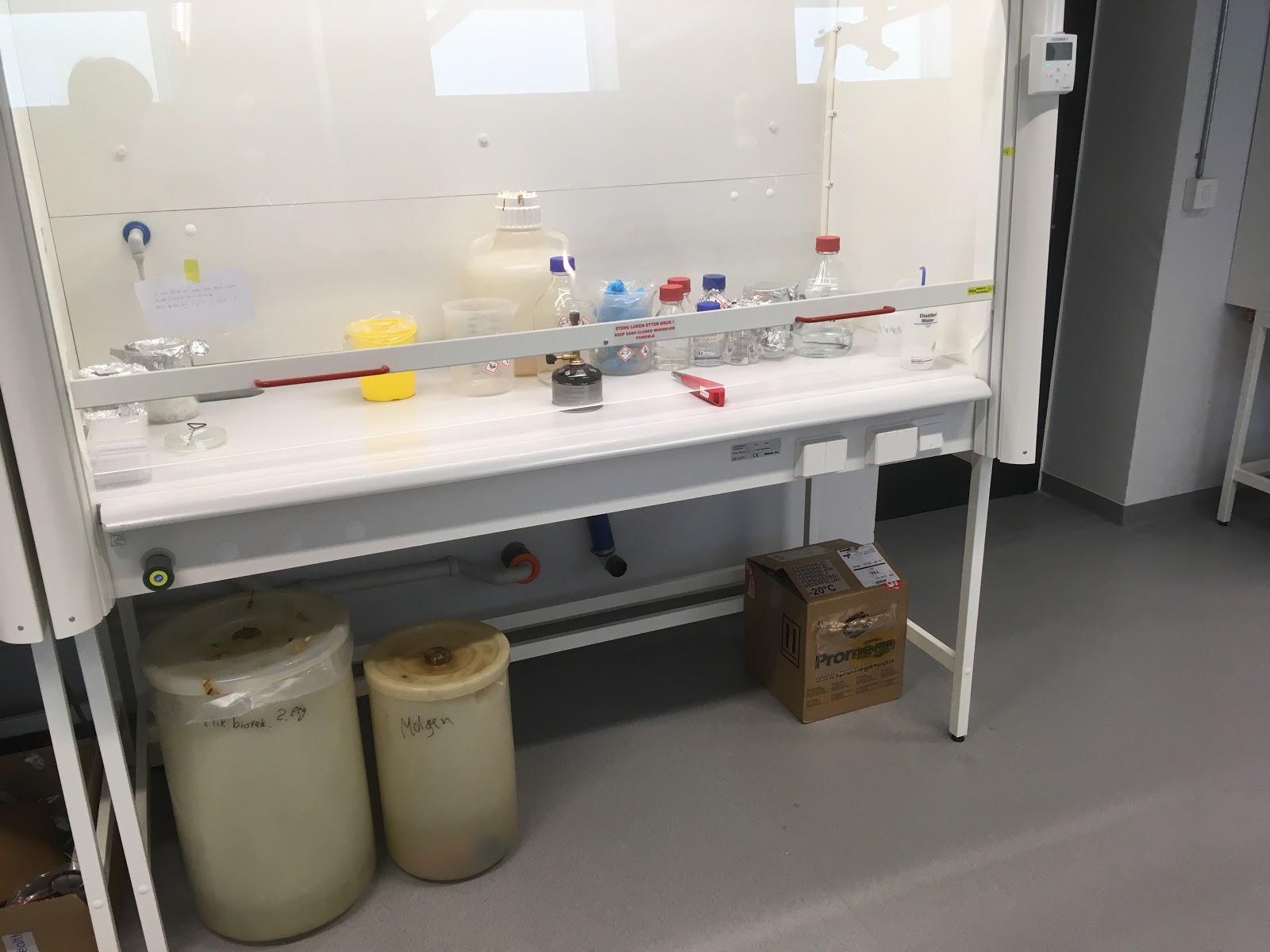
Project Safety
Safety was a key feature in our project design. Our advisors Eivind Almaas and Nikolay Martyushenko helped us with choosing a safe project. Most of us had little lab experience to begin with, so we were in need of lab expertise and general safety protocols. Nikolay Martyushenko introduced us to various lab procedures such as making medium, autoclaving equipment, inoculating bacteria on plates and in liquid media. We were also introduced to the various safety precautions associated with these procedures which we followed whenever working in the lab.
A lot of our work was done in laboratories belonging to the faculty of biotechnology and food science here at NTNU. Before we could use their lab and all its equipment everybody had to fill out risk assessment forms (Link)and take part in a lab training tour led by the faculties’ staff engineer Hanne Jørgensen. The tour introduced us to available equipment and its location, safety requirements, and responsible use.

We worked with E.coli Dh5α and TG1 strains, both risk group 1 organisms. Transformation of these organisms was done inside our student lab. Since we were working with genetically modified organisms, we put a strong emphasis on keeping our engineered bacteria inside our lab. This was done by autoclaving all bacterial waste and contaminated equipment such as gloves and Eppendorf tubes, washing our hands before leaving the lab and washing our workspace with 70% ethanol.
Except for Crystal Violet (CV), the chemicals used during our project didn’t present any unique safety risks. CV, a carcinogen, was handled with great care. Due to it being light-sensitive, all CV solutions were covered with aluminum foil and marked with stickers matching its Safety Data Sheet (Link). CV liquid waste was marked by its contents and disposed of in accordance with instructions from staff engineer Hanne Jørgensen.
We also worked with confocal fluorescence microscopy and flow cytometry. We received instrument training from Astrid Bjørkøy and Marieke Olsman, respectively. These instruments presented no intrinsic safety risks, but we made sure to follow the protocols associated with both instruments carefully. Bacteria-contaminated equipment such as optical glass and gloves were thrown away after use and then autoclaved.
Our collaboration with iGEM Marburg involved them sending us a petri dish with Vibrio Natriegens bacteria and a protocol for making a growth curve for their bacteria. Since nobody had previously worked with V.natriegens at the Department of Biotechnology and Food Science here at NTNU, we had to get safety approval before starting our work in the laboratory. We asked Marburg to provide us with safety information regarding V.natriegens, which we then sent to the Department of Biotechnology and Food Science. Getting approval was unproblematic since V.natriegens is a risk group 1 organism without any intrinsic safety risks.
General lab safety
Cotton lab coats were worn inside the lab at all times. Whenever we had to go another lab we left our lab coat behind in our student lab and borrowed a vacant lab coat at the entrance to the faculties labs. As a general rule, we did our work in fume hoods, ensuring the safest possible work environment for us and the people around. Whenever handling chemicals or bacteria we wore fitting nitrile gloves, changing them frequently for optimal effect. Our beakers and tubes were marked with their specific contents to ensure that they were handled correctly and that there would be no confusion regarding their content. When leaving the lab, we washed our hands with soap and cleaned our workspace with 70% ethanol. Whenever handling the autoclave or taking bacteria from the freezer we wore thermal and cryo-resistant gloves, respectively. Safety goggles were worn whenever handling acetic acid and methanol. All of our personal equipment, such as backpacks, jackets, and food were kept outside the lab at all times. Since people switched tasks every week, we made sure to have at least 1 student from the previous week present at the lab to ensure that the newcomers followed the same procedures and safety measures surrounding the different parts of our project, such as biofilm measurement and biobrick ligation.

Conclusion
The major safety hazards in our project were Crystal Violet and recombinant E.coli DH5α and TG1 bacteria. As long as safety protocols are being followed, we believe that our project is safe for both researchers and the environment.


